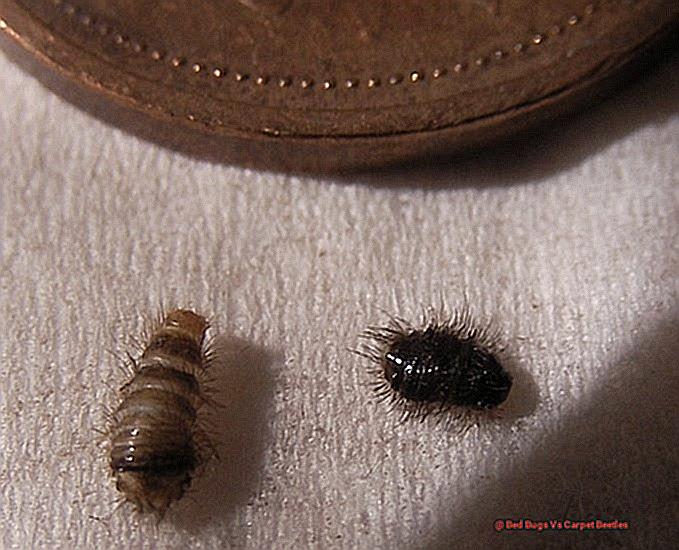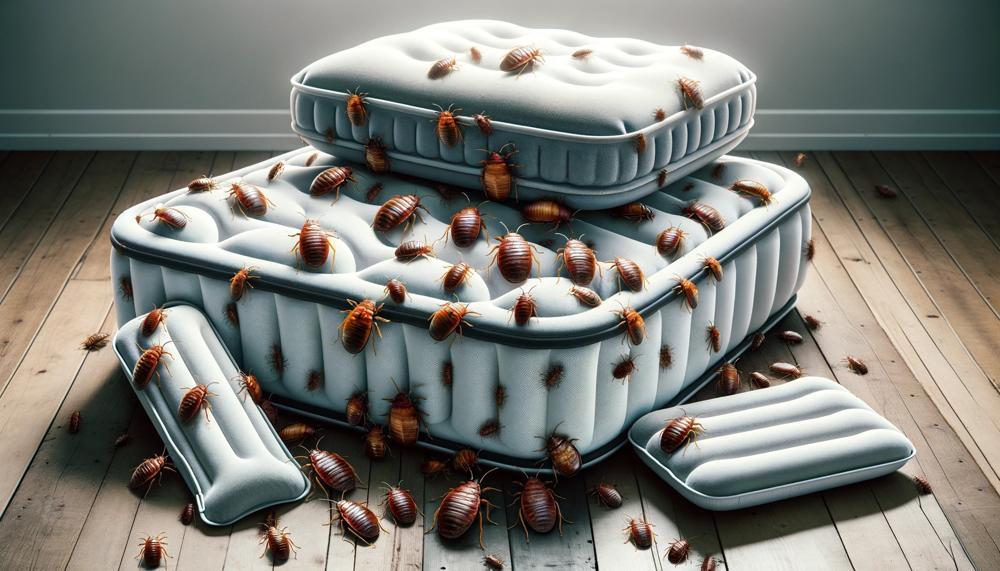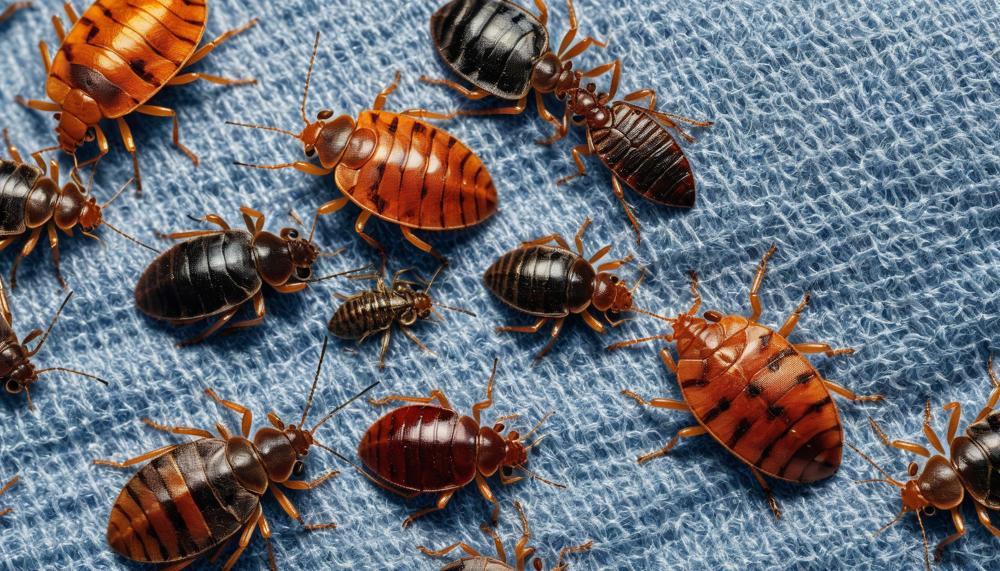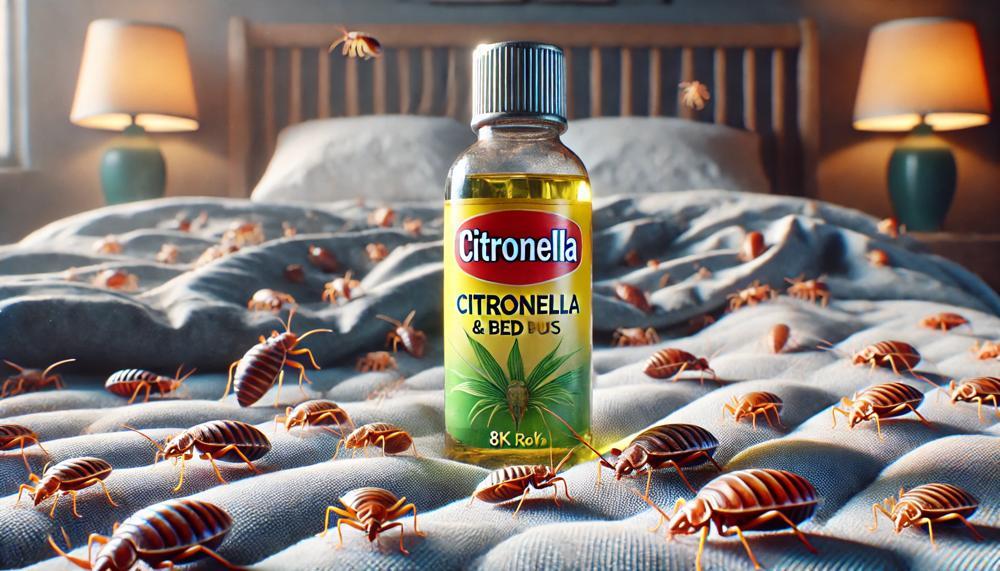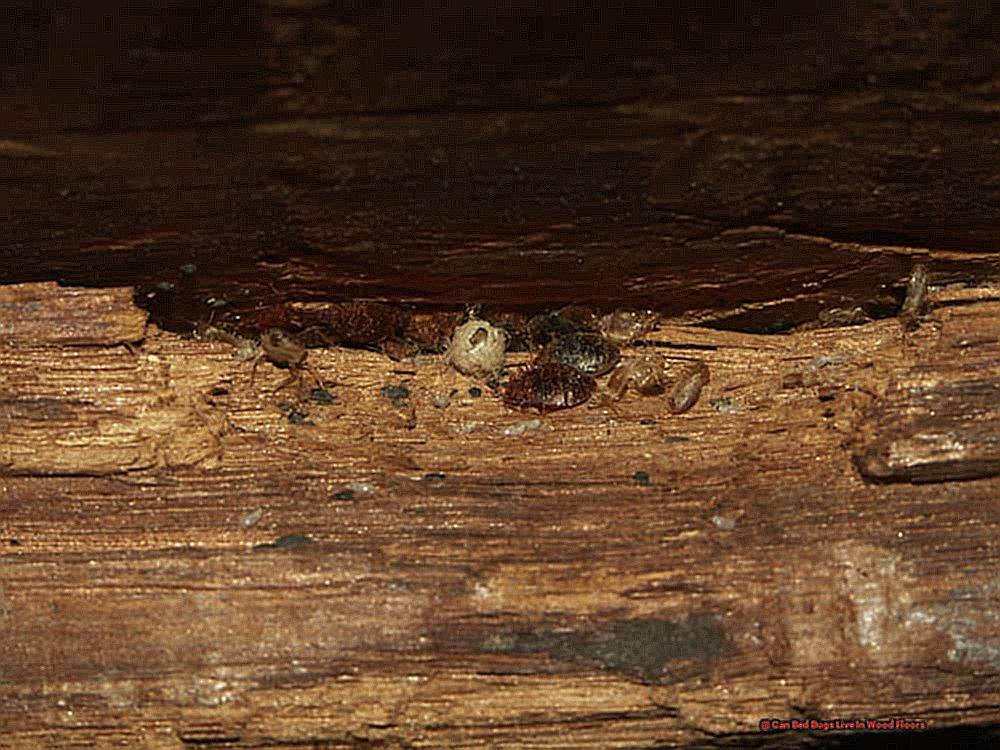Imagine this scenario: you’re tidying up your garage on a sunny Saturday afternoon, when suddenly you spot a small creature scurrying across the floor.
Your heart races as you realize it’s a bed bug – and it’s not alone. As unsettling as it may seem, the truth is that these sneaky bugs can indeed make themselves at home in your garage.
While we typically associate them with our bedrooms, they are surprisingly adaptable and can thrive in various environments. So before you brush off the idea of bed bugs infesting your garage, let’s delve into the facts and explore this possibility together.
After all, knowledge is power when it comes to keeping these unwelcome visitors away.
Table of Contents
- 1 Can Bed Bugs Live In A Garage?
- 2 Can Bed Bugs Live In Plastic Containers?
- 3 How Long Do the Bed Bugs Live In A Plastic Bag?
- 4 Can Bed Bugs Survive Outside In Summer?
- 5 Can You Bomb A Storage Unit For Bed Bugs?
- 6 Can Storage Unit Get Bed Bugs?
- 7 How Long Do Bed Bugs Last In A Storage Unit?
- 8 Can Bed Bugs Live In A Microwave?
- 9 How To Get the Bed Bugs Out Of The Garage
- 10 How To Prevent Bed Bugs In A Storage Unit
- 11 Conclusion
Can Bed Bugs Live In A Garage?
Bed bugs – just the mere mention of these minuscule blood-sucking insects is enough to make anyone feel uneasy. These pesky creatures are notorious for infesting homes and causing discomfort to its inhabitants. But while most people associate bed bugs with bedrooms and mattresses, one potential breeding ground often goes unnoticed – the garage.
So, can bed bugs live in a garage? The answer is affirmative, and here’s why.
A Dark, Warm, and Humid Environment
Bed bugs thrive in warm and humid environments, making garages an ideal spot for them to flourish. The lack of sunlight and constant darkness in garages provide an ideal hiding place for bed bugs to reproduce. Additionally, the warmth of a garage mimics the temperature of a human body, which is highly favorable for bed bugs.
Clutter and Hiding Spots
Garages are often used as storage spaces for items that are not regularly used, such as suitcases, old clothes, and furniture. These items provide ample hiding spots for bed bugs to lay their eggs and hide. With the abundance of clutter in garages, it can be challenging to spot signs of bed bug activity, allowing them to spread undetected.
Proximity to the Outdoors
Another crucial factor that contributes to bed bugs’ survival in garages is their proximity to the outdoors. Garages are often connected to the outside of the house, making it easy for bed bugs to enter from the outside. They can hitchhike on clothing, furniture, or even pets and make their way into the garage.
Preventing Bed Bug Infestations in Garages
The thought of having bed bugs living in your garage may be unsettling, but there are steps you can take to prevent an infestation.
- Regularly Declutter and Clean: Consistently decluttering and cleaning your garage will eliminate potential hiding spots for bed bugs and make it easier to spot any signs of infestation.
- Be Vigilant When Bringing Items Into the Garage: Before bringing items into the garage, inspect them thoroughly, and avoid storing used or second-hand items in the garage. If you suspect an item may have bed bugs on it, quarantine it until it can be properly treated or disposed of.
- Seal Any Cracks and Crevices: Bed bugs can enter a garage through small cracks and crevices. Seal any gaps around doors and windows, as well as repairing any holes in the walls or floors.
Can Bed Bugs Live In Plastic Containers?
At first glance, it may seem that plastic containers would be an impenetrable fortress against bed bugs. However, the truth is not so simple. While these pests cannot technically live inside plastic containers, they can still survive for extended periods without food or oxygen. Unlike other pests like cockroaches, bed bugs do not need much air to survive, meaning they can thrive inside sealed containers or bags for weeks on end.
Plastic containers are often recommended for disposing of infested items as they can suffocate bed bugs by cutting off their oxygen supply. However, it’s important to keep in mind that bed bugs are tiny and resourceful creatures. Even the smallest opening in a plastic container can provide an escape route for them.
To truly contain bed bugs in a plastic container, proper sealing is crucial. For instance, if you have a snap-on lid container, it’s essential to also tape up the edges to prevent any possible escape routes for these persistent pests. Regularly checking and replacing damaged containers is also necessary to ensure their effectiveness in bed bug control.
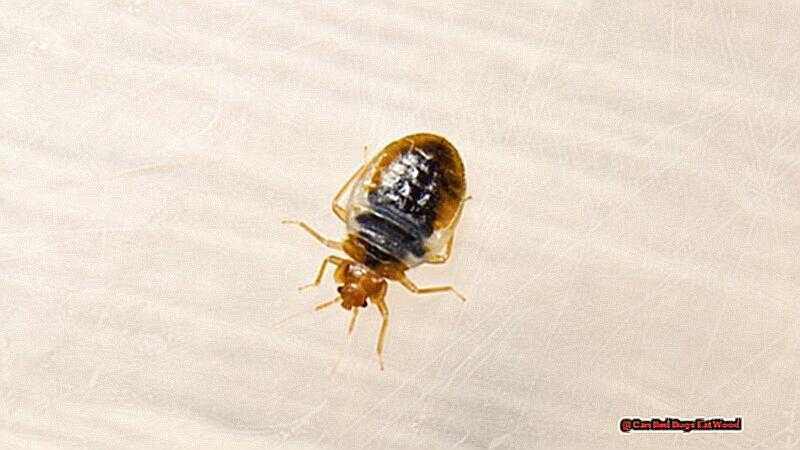
But even with proper sealing, plastic containers may not be 100% effective against bed bugs. These sneaky creatures can still find their way into rarely used items or those left unattended for long periods, even if stored in plastic containers. That’s why it’s crucial to regularly inspect and clean these items to prevent potential infestations.
One effective use of plastic containers in bed bug control is through the use of thick plastic mattress covers. These covers are specifically designed to keep bed bugs away and trap any existing ones inside. However, it’s important to note that while high temperatures may shorten the lifespan of bed bugs inside a plastic bag, they cannot be suffocated as they require minimal air to survive.
In conclusion, while plastic may seem like a formidable barrier against bed bugs, it’s essential to use high-quality, premium-grade covers specifically designed for bed bug protection. These covers are thicker and more durable, making it harder for these persistent pests to find a way out.
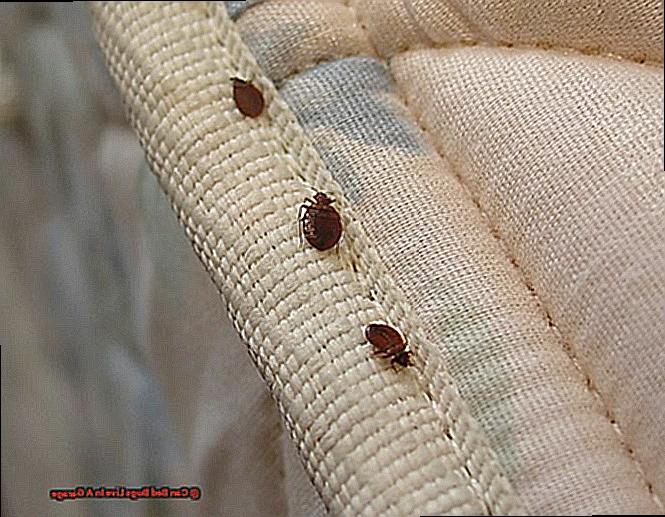
How Long Do the Bed Bugs Live In A Plastic Bag?
As a bed bug specialist, you understand the unyielding nature and persistence of these creepy crawlers. They are infamous for their ability to thrive and survive in the most improbable of places, making their eradication a daunting task. But what about inside a sealed plastic bag? Can these bothersome bugs endure in such a confined and seemingly impenetrable space?
The answer may astound you. Yes, bed bugs can indeed survive within a sealed plastic bag, for up to 7 months or even more. These minuscule insects have perfected the art of survival, and they can do so even without sustenance or oxygen for extended periods.
But how is this possible? How can something as uncomplicated as a plastic bag keep these pests alive for such an extended duration? The secret lies in their distinct biology and survival strategies.
Bed bugs have evolved to withstand harsh conditions and enter a dormant state when resources are scarce. This means that they can decelerate their metabolism and go into a state of suspended animation, where they require minimal to no nourishment to survive.
In fact, bed bugs can endure for up to 300 days without any sustenance, making them one of the most tenacious pests out there. And when trapped inside a sealed plastic bag, they have all the essentials to stay alive and bide their time for their next prey.
But don’t panic just yet. While bed bugs can indeed endure in plastic bags, there are ways to eradicate them completely. Using superior-quality bed bug covers specifically designed to trap and suffocate these pests is crucial. These covers are crafted with materials that are too compact for bed bugs to pierce through and prevent them from escaping or entering the bag.
Moreover, maintaining appropriate humidity and temperature levels can also aid in accelerating the process of eliminating bed bugs in plastic bags. These pests flourish in warm and damp environments, so keeping the temperature and humidity levels low can make their dormant state less effective, ultimately leading to their demise.
In conclusion, while bed bugs can survive for up to 7 months inside a sealed plastic bag, they are not invincible. By utilizing the right tools and techniques, you can eradicate these pests and reclaim your home from their grasp.
Can Bed Bugs Survive Outside In Summer?
Bed bugs, known for their tenacious nature and ability to thrive in various environments, can also survive outside during the summer months. Despite the scorching heat, these pesky creatures can adapt and continue to infest homes and public places. So, what’s the secret to their survival outside in the summer?
It all comes down to their resilience and adaptability. Bed bugs are not only found in bedrooms but can also be found in public spaces such as hotels, movie theaters, and even public transportation. This constant exposure to different temperatures and conditions makes them well-equipped to survive outdoors as well.
Although high outdoor temperatures can potentially kill bed bugs, other factors such as shade, moisture, and material thickness can impact their survival. This means that bed bugs can still thrive in the summer, especially in shady or humid areas. Simply relying on the hot weather to eradicate these pests may not be enough.
So, what is the most effective way to exterminate bed bugs without resorting to chemicals during the summer? Professional heat treatment is the answer. This method involves raising the temperature in the infested area to lethal levels for bed bugs. The thermal death point for these pests is 113°F for 90 minutes or 118°F for 20 minutes, depending on the duration of exposure.
Heat treatment requires skilled exterminators equipped with specialized equipment to raise temperatures in the infested area to the desired level. While the time it takes for bed bugs to die in heat varies depending on temperature and exposure duration, it typically takes around 2-3 hours for complete eradication. This method not only kills adult bed bugs but also their eggs and nymphs, ensuring a thorough removal of the infestation.
But why is heat treatment so effective? It’s all about breaking down cellular membranes and denaturing proteins essential for bed bug survival. Even in hard-to-reach areas, heat application effectively kills these pests. This method is not only highly effective but also non-toxic, making it a safe option for exterminating bed bugs without harmful chemicals.
In addition to heat treatment, taking preventative measures is crucial to avoiding future infestations. Thoroughly inspect and wash secondhand items before bringing them indoors. Regular vacuuming and sealing cracks and crevices where bed bugs can hide can also help prevent infestations. A comprehensive approach that combines chemical treatments with preventative measures is necessary for effectively dealing with bed bugs.
Can You Bomb A Storage Unit For Bed Bugs?
Bed bugs, those pesky pests that can infest even the cleanest of spaces, are known for their resilience and adaptability. They are a common problem in homes and public spaces, and many people turn to bed bug bombs or foggers as a quick solution to get rid of them. But is it safe and effective to use a bed bug bomb in a storage unit? Let’s delve into the research and find out.
Effectiveness of Bed Bug Bombs in Storage Units
Bed bug bombs, or foggers, work by releasing insecticides into the air. The idea is that the chemicals will kill any bed bugs on contact, including those hiding in cracks and crevices. However, studies have shown that bed bug bombs are not very effective in eliminating bed bugs. This is due to their inability to reach deep enough into furniture and walls where bed bugs may be hiding. Additionally, bed bugs have become resistant to many commonly used insecticides found in these bombs.
Safety Concerns of Using Bed Bug Bombs in Storage Units
Aside from its questionable effectiveness, using a bed bug bomb in a storage unit can also pose safety risks. These insecticides are toxic chemicals that can be harmful to humans and pets if not used properly. When released into the air, they can linger for several hours or even days, exposing anyone who may come into contact with them. This is especially concerning for storage units where people may store personal belongings or regularly visit.
Safer Alternatives for Bed Bug Control in Storage Units
Instead of relying on potentially hazardous bed bug bombs, it is best to opt for safer alternatives when dealing with bed bugs in storage units. One highly effective method is professional heat treatment, which uses specialized equipment to raise temperatures to lethal levels for the pests. This non-toxic approach kills not only adult bed bugs but also their eggs and nymphs, making it a comprehensive solution.
In addition to heat treatment, regular inspections and vacuuming can also help prevent and control bed bug infestations in storage units. It is important to regularly check for signs of bed bugs and address any issues promptly to prevent them from spreading.
Conclusion
In conclusion, using a bed bug bomb in a storage unit is not recommended due to its questionable effectiveness and safety concerns. It is best to opt for safer and more comprehensive methods such as professional heat treatment and regular inspections to effectively control bed bugs.
Can Storage Unit Get Bed Bugs?
These tiny creatures are now harder to exterminate due to their growing resistance to pesticides. And to make matters worse, they can easily hitchhike into your home through items stored in a storage unit.
But fear not, with proper precautions and storage practices, you can prevent bed bugs from infesting your home when using a storage unit. Here’s how:
Inspect and Treat Infested Items Before Storing Them
The most common way for bed bugs to infiltrate your home is through infested items. These can include secondhand furniture or items stored in the garage before being brought back into the house. Before storing these items, thoroughly inspect them for any signs of bed bugs. If you do find some, treat them with essential oil sprays or pesticide powders containing diatomaceous earth to eliminate and repel the bed bugs.
Use Traps and Lures to Stop Them from Reaching You
In addition to treating infested items, you can also use traps and lures to prevent bed bugs from reaching your home. These traps work by attracting bed bugs with pheromones or heat and then trapping them before they can reach you. Essential oil lures have been proven effective in exterminating and deterring bed bugs.
Keep Your Garage Clean and Clutter-Free
Bed bugs usually prefer living within six feet of their host’s bed, so it’s less likely that they’ll choose the garage as their dwelling place. However, a cluttered garage can provide hiding spots for bed bugs, making it easier for them to hitchhike into your home on infested items. Keep your garage clean and clutter-free to make it less attractive to bed bugs.
Consider Using Heat Treatment for Infested Items
If you do find bed bugs in your storage unit, consider utilizing professional heat treatment to eradicate them. This method uses high temperatures to kill bed bugs and their eggs without the use of chemicals. It is a safe and effective way to get rid of bed bugs in your storage unit.
Inspect Your Storage Unit Regularly
Regular inspections of your storage unit can help catch any potential bed bug infestations early on. Look for indicators of bed bugs, such as dark spots or bloodstains on furniture or items.
How Long Do Bed Bugs Last In A Storage Unit?
Bed bugs are unwanted visitors that can be a major nuisance for homeowners. However, what happens when they find their way into a storage unit? How long can they survive in this environment, and what measures can be taken to prevent and eliminate infestations? As someone knowledgeable about bed bugs in storage units, I have gathered research and personal experience to offer effective solutions for this common problem.
How long can bed bugs survive in a storage unit?
The lifespan of bed bugs varies depending on several factors, but they are capable of surviving for an extended period without feeding. In fact, they can go up to a year without a blood meal. These resilient pests can also thrive in temperatures ranging from close to freezing up to 122 degrees, making storage units an ideal breeding ground.
What makes storage units vulnerable to bed bug infestations?
Storage units create the perfect conditions for bed bugs to reproduce and spread. With the abundance of clutter and items stored inside, it is easy for the pests to hide and multiply. Additionally, storage facilities experience high traffic, increasing the likelihood of bed bugs hitchhiking from one unit to another.
How can you prevent and treat bed bug infestations in storage units?
- Take proactive measures: To prevent bed bug infestations, it is essential to be proactive. This includes regular inspections and controlling the temperature inside the unit. Maintaining temperatures below 0°F or above 120°F can help manage bed bugs.
- Inspect items before storing: Before storing any items in a storage unit, carefully inspect them for signs of bed bugs. Look for dark spots on bedding or furniture, shed skins, and tiny eggs.
- Utilize heat treatment: If you suspect an item may be infested with bed bugs, consider using heat treatment before storing it. This involves exposing the item to high temperatures (120°F or above) for several hours, effectively killing any bed bugs and their eggs.
- Regular inspections: It is crucial to regularly inspect storage units for any signs of bed bugs. Catching an infestation early on can prevent it from spreading to other units.
- Educate employees and customers: It is important to educate all employees and customers about bed bugs and how to identify them. This can help prevent infestations from entering the storage facility in the first place.
Can Bed Bugs Live In A Microwave?
The simple answer is no. It may seem like an unconventional approach, but using a microwave is actually a highly effective method for eliminating bed bugs in all stages of their life cycle. In this article, we will explore the science behind this technique and why it is such a successful form of bed bug control.
Why Microwaves Are Effective Against Bed Bugs
Microwaves use electromagnetic waves to heat up food, but they can also penetrate the bodies of bed bugs and cause them to overheat and die. This method is particularly effective because bed bugs have a low tolerance for heat. Even brief exposure to microwaves can successfully kill them, making it a powerful tool for getting rid of these pests.
How Long Does It Take To Kill Bed Bugs In A Microwave?
The time it takes to kill bed bugs in a microwave depends on the power of the appliance and the size of the infested items. However, studies have shown that even short exposure times can effectively eliminate all stages of bed bugs. For instance, a 2012 study discovered that just 7 seconds of exposure to microwave radiation was enough to kill adult bed bugs.
Can Microwaving Eggs Kill Bed Bugs?
Yes, even bed bug eggs cannot survive in a microwave. The heat generated by microwaves denatures the enzymes in the eggs, preventing them from hatching. This makes microwaving an effective solution for eradicating future generations of bed bugs.
Safety Precautions When Using A Microwave For Bed Bug Control
While microwaving may seem like a simple and convenient solution for bed bug control, it is important to take some safety precautions. First, use a dedicated microwave for this purpose and not one used for food. Additionally, do not overfill the microwave as this can lead to uneven heating and may not effectively kill all the bed bugs.
In Conclusion
Microwaves are an efficient and practical means of eliminating bed bugs in all stages of their life cycle. It is a quick and convenient method that can be used for small items such as clothing, bedding, and personal belongings. However, for larger infestations, it is best to seek professional help from a pest control company.
How To Get the Bed Bugs Out Of The Garage
It is a common misconception that these pests only reside in bedrooms and mattresses. However, they can find their way into your garage and cause havoc. In this article, we will explore the perplexing conundrum of getting rid of bed bugs from your garage.
Wrap Affected Furniture and Belongings with Plastic
When dealing with a bed bug infestation in your garage, it is crucial to contain it as soon as possible. One effective method is to wrap affected furniture and belongings in plastic. This will prevent the bed bugs from spreading to other areas of your house.
Discard Unused Furniture and Items
If you have any old or unused furniture or items in your garage that are infested with bed bugs, it is best to get rid of them. Not only will this eliminate the source of the infestation, but it will also prevent the bed bugs from spreading to other objects.
Utilize Essential Oil Spray
Essential oils like lavender, peppermint, and tea tree have natural repellent properties against insects. You can create a spray by combining a few drops of these oils with water and spraying it around your garage. This will act as a natural deterrent for bed bugs.
Thoroughly Wash and Clean Launderable Items
Any launderable items should be washed on medium or high-heat for a minimum of 30 minutes. This will effectively kill any bed bugs or eggs present on the items. After washing, make sure to store them in sealed plastic bags to prevent re-infestation.
Unpack Bags in an Alternative Area
If you have recently traveled or brought new items into your home, it is essential to unpack them in a different area than your bedroom. This could be your garage, mudroom, or foyer. By doing so, you can prevent potential bed bugs from entering your bedroom.
Eliminate Old Furniture
As mentioned earlier, old furniture can be a breeding ground for bed bugs. If you have any outdated furniture in your garage, it is best to dispose of it to eliminate the source of the infestation.
Use Lures and Traps
Lures and traps are effective tools for attracting and capturing bed bugs.
How To Prevent Bed Bugs In A Storage Unit
These tiny, elusive pests not only cause discomfort and stress, but they can also damage your belongings and easily spread throughout your home. The last thing you want is to discover that your storage unit is infested with these pesky insects. So, how can you prevent bed bugs in your storage unit? Here are some expert tips to keep these pests at bay.
Choose a reputable and well-maintained storage facility.
The first step in preventing bed bugs in your storage unit is to select a reputable and well-maintained self storage facility. Look for a facility that has regular pest control checks and effective measures in place to prevent infestations.
Keep your unit clean and tidy.
A cluttered and disorganized storage unit provides an ideal hiding spot for bed bugs. Keep your unit vacuumed, clean, and organized to eliminate potential hiding spots for these pests.
Inspect before moving in.
Before moving your belongings into the storage unit, thoroughly inspect it for any signs of an active bed bug infestation. Look for tiny dark spots, shed skins, or live bugs. If you find any, inform the facility manager immediately and do not move your items in until the issue is resolved.
Seal up cracks and crevices.
Check for any cracks or crevices in the walls or floors of your storage unit that may serve as an entry point for bugs and rodents. Seal them up using caulk or weather stripping to prevent pests from entering.
Remove spider webs.
Spiders are natural predators of bed bugs, so it’s crucial to remove any spider webs from your storage unit. This will not only discourage bed bugs but also other pests like ants and flies.
Utilize pest deterrents.
Consider using bug spray to create a barrier against bed bugs in your storage unit. Alternatively, you can place a few drops of peppermint oil on cotton balls as a natural pest deterrent.
Inspect items before storing.
Before storing your belongings, thoroughly inspect them for any signs of bed bugs. Wash clothing and bedding in hot water and dry them on high heat to eliminate any bed bugs or their eggs that may be present.
Conclusion
As we have discussed, bed bugs are highly adaptable and resilient creatures that can survive in various environments. But can they also live in a garage? The answer is not a simple yes or no. While garages may not be the most ideal living space for bed bugs, they can still thrive and survive in this area.
The reason for this is because garages often provide the perfect conditions for bed bugs to hide and reproduce. They offer dark and secluded spaces such as cracks, crevices, and cluttered areas where these pests can easily go unnoticed. Additionally, garages are usually connected to other parts of the house, making it easier for bed bugs to travel and infest other areas.
Furthermore, garages are also commonly used as storage spaces for old furniture or clothing, which are prime hiding spots for bed bugs. These pests can easily hitchhike on these items and spread throughout the garage.
It’s important to note that while bed bugs may be able to survive in a garage, they cannot thrive without a blood meal from a human host. Therefore, if you do find evidence of bed bugs in your garage, it’s crucial to take immediate action to prevent them from spreading into your home.
In conclusion, while it is possible for bed bugs to live in a garage due to its suitable conditions, they cannot sustain themselves without access to human blood. So if you suspect a bed bug infestation in your garage or anywhere else in your home, it’s best to seek professional help immediately before the situation worsens.

